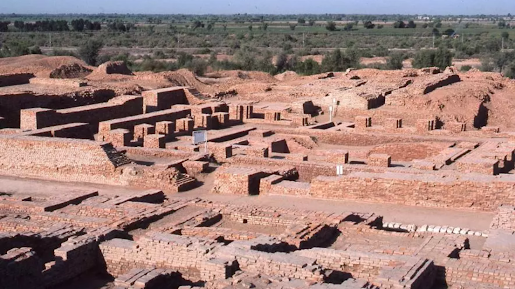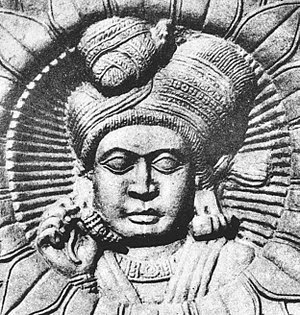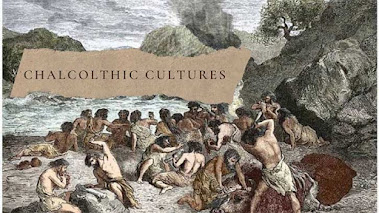Sites Of Indus Valley Civilization (Part 1)
Alamgirpur
·
Artifacts found in this site were harappan
pottery,ceramic items like roof tiles,dishes,beads,terracotta cakes,figurines
of a humped bull,snakes and broken blade made of copper was found.
· This site was also called PARASARAM-KA-KHERA. This site was discovered by Punjab university in 1974.
 Excavation Site Of Alamgirpur
Excavation Site Of AlamgirpurBet Dwarka
Bet Dwarka was a Late Harappan site according to dating of pottery found under the sea , It was one of the important ports of Indus valley civilization it was famous for conch shells which was used to make ornaments in Indus Valley Civilization . The Place has a huge religious importance in Indian Culture . It and various other Indus Valley Civilization Sites on the western coast had trades with Mesopotamia in those times and was also known as Meluha according to Research papers.
Ancient Conch shell Founded at Bet Dwarka



Bhiranna
Bhiranna is the oldest site of Indus Valley Civilization founded . It date backs to upto 8000 BC - 7000 BC !!! It's discovery was very important as it proved the existance of civilization predating to 10000 years back from today. It was situated along the Ghaggar-Hakra River.

Diamabad is late Harappan site dating around 2200 BC which is also termed as chalcothic age . It is located on the banks of Pravara river which is a tributary of Godavari River. This Site signifies the extent of Harappan Civilization , also suggests that there may have been more Harappan sites on Godavari River and South of India .
One of the most significant discoveries at the site is what has come to be known as the Daimabad man, a bronze sculpture of a man riding a chariot drawn by bulls. Around 45 cm long and 16 cm wide, the sculpture is detailed. It depicts a man riding an elaborate chariot yoked with two bulls.

Dholavira
Dholavira is one of the Biggest Harappan Sites found in India . The City is one of the 5 major Metropolis of Indus Valley Civilization it was the Grandest Port City of it's time. Dholavira was an important centre of trade between settlements in south Gujarat, Sindh and Punjab and western Asia.
The excavation brought to light the urban planning and architecture, and unearthed large numbers of antiquities such as, animal bones, gold, silver, terracotta ornaments, pottery and bronze vessels.The city of Dholavira had great Urban planning organization , Unlike , Harappa and Mohenjo-daro, the city was constructed to a pre-existing geometrical plan consisting of three divisions – the citadel, the middle town, and the lower town.The acropolis and the middle town had been furnished with their own defence-work, gateways, built-up areas, street system, wells, and large open spaces. The acropolis is the most thoroughly fortified and complex area in the city, of which it appropriates the major portion of the southwestern zone. The towering "castle" stands is defended by double ramparts.Next to this stands a place called the 'bailey' where important officials lived. The city within the general fortifications accounts for 48 ha (120 acres). There are extensive structure-bearing areas which are outside yet integral to the fortified settlement. Beyond the walls, another settlement has been found. The most striking feature of the city is that all of its buildings, at least in their present state of preservation, are built of stone, whereas most other Harappan sites, including Harappa itself and Mohenjo-daro, are almost exclusively built of brick. Dholavira is flanked by two storm water channels; the Mansar in the north, and the Manhar in the south. In the town square, there is a area high above the ground, called the "Citadel''.
One of the unique features of Dholavira is the sophisticated water conservation system of channels and reservoirs, the earliest found anywhere in the world, built completely of stone. The city had massive reservoirs, three of which are exposed.They were used for storing fresh water brought by rains .The kind of efficient system of Harappans of Dholavira, developed for conservation, harvesting and storage of water speaks eloquently about their advanced hydraulic engineering, given the state of technology in the third millennium BCE.
Painted Indus black-on-red-ware pottery, square stamp seals, seals without Indus script, a huge signboard measuring about 3 m (9.8 ft) in length, containing ten letters of Indus script. One poorly preserved seated male figure made of stone has also been found, comparable to high quality two stone sculptures found at Harappa. Large black-slipped jars with pointed base were also found at this site. A giant bronze hammer, a big chisel, a bronze hand-held mirror, a gold wire, gold ear stud, gold globules with holes, copper celts and bangles, shell bangles, phallus-like symbols of stone, square seals with Indus inscription and signs, a circular seal, humped animals, pottery with painted motifs, goblets, dish-on-stand, perforated jars, Terracotta tumblers in good shape, architectural members made of ballast stones, grinding stones, mortars, etc., were also found at this site.Stone weights of different measures were also found.





Comments
Post a Comment